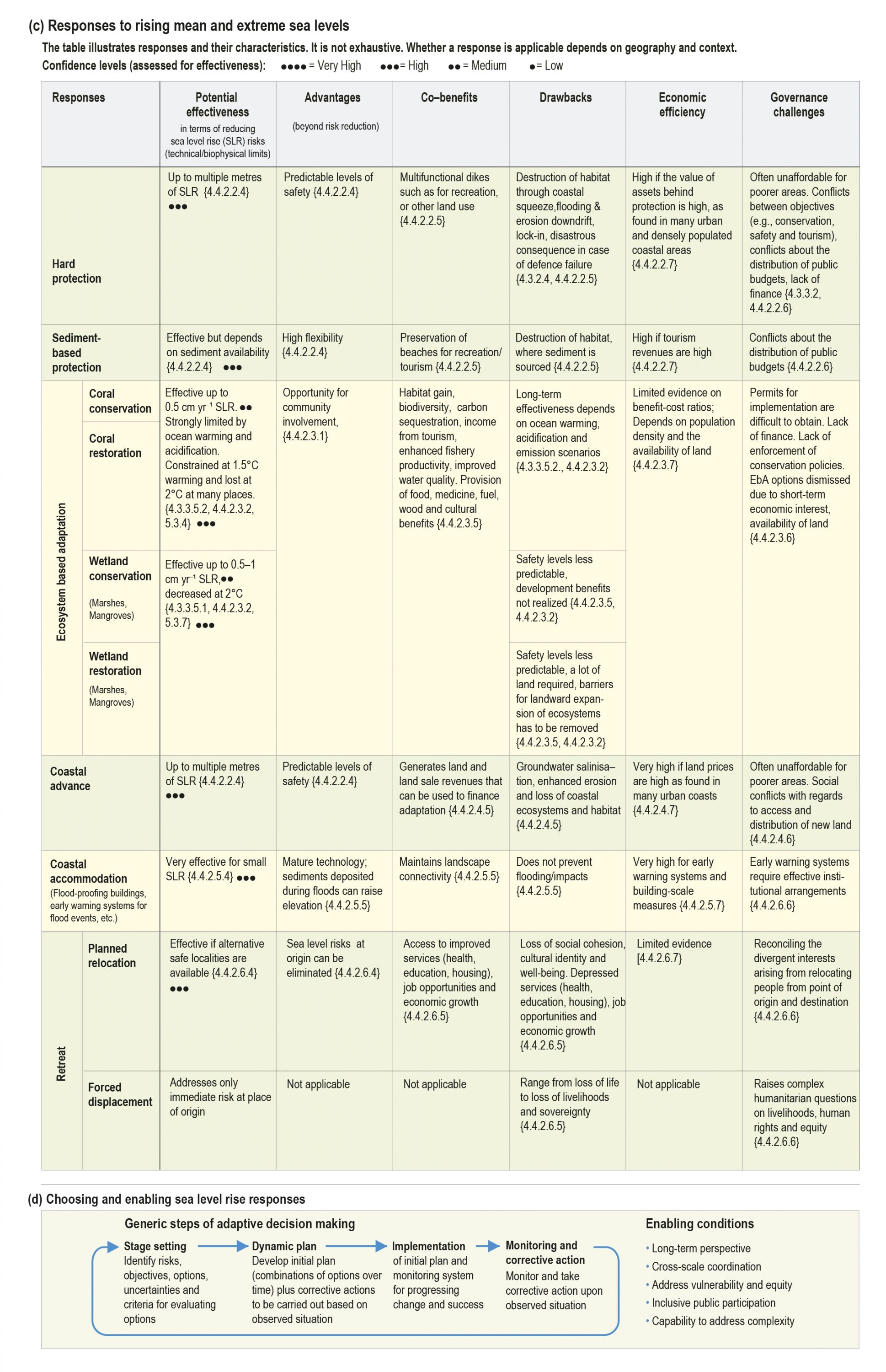
FIGURE TS.7 (CD)
Figure TS.7 | Sea level rise risks and responses. The term response is used here instead of adaptation because some responses, such as retreat, may or may not be considered to be adaptation. (a) shows the combined risk of coastal flooding, erosion and salinization for illustrative geographies in 2100, due to changing mean and extreme sea levels under RCP2.6 and RCP8.5 and under two response scenarios. Risks under RCPs 4.5 and 6.0 were not assessed due to a lack of literature for the assessed geographies. The assessment does not account for changes in extreme sea level beyond those directly induced by mean sea level rise; risk levels could increase if other changes in extreme sea levels were considered (e.g., due to changes in cyclone intensity). Panel (a) considers a socioeconomic scenario with relatively stable coastal population density over the century. {SM4.3.2} Risks to illustrative geographies have been assessed based on relative sea level changes projected for a set of specific examples: New York City, Shanghai and Rotterdam for resource-rich coastal cities covering a wide range of response experiences; South Tarawa, Fongafale and Male’ for urban atoll islands; Mekong and Ganges-Brahmaputra-Meghna for large tropical agricultural deltas; and Bykovskiy, Shishmaref, Kivalina, Tuktoyaktuk and Shingle Point for Arctic communities located in regions remote from rapid glacio-isostatic adjustment. {4.2, 4.3.4, SM4.2} The assessment distinguishes between two contrasting response scenarios. “No-to-moderate response” describes efforts as of today (i.e., no further significant action or new types of actions). “Maximum potential response” represents a combination of responses implemented to their full extent and thus significant additional efforts compared to today, assuming minimal financial, social and political barriers. The assessment has been conducted for each sea level rise and response scenario, as indicated by the burning embers in the figure; in-between risk levels are interpolated. {4.3.3} The assessment criteria include exposure and vulnerability (density of assets, level of degradation of terrestrial and marine buffer ecosystems), coastal hazards (flooding, shoreline erosion, salinization), in-situ responses (hard engineered coastal defenses, ecosystem restoration or creation of new natural buffers areas, and subsidence management) and planned relocation. Planned relocation refers to managed retreat or resettlement as described in Chapter 4, i.e., proactive and local-scale measures to reduce risk by relocating people, assets and infrastructure. Forced displacement is not considered in this assessment. Panel (a) also highlights the relative contributions of in-situ responses and planned relocation to the total risk reduction. (b) schematically illustrates the risk reduction (vertical arrows) and risk delay (horizontal arrows) through mitigation and/or responses to sea level rise. (c) summarizes and assesses responses to sea level rise in terms of their effectiveness, costs, co-benefits, drawbacks, economic efficiency and associated governance challenges. {4.4.2} (d) presents generic steps of an adaptive decision-making approach, as well as key enabling conditions for responses to sea level rise. {4.4.4, 4.4.5}